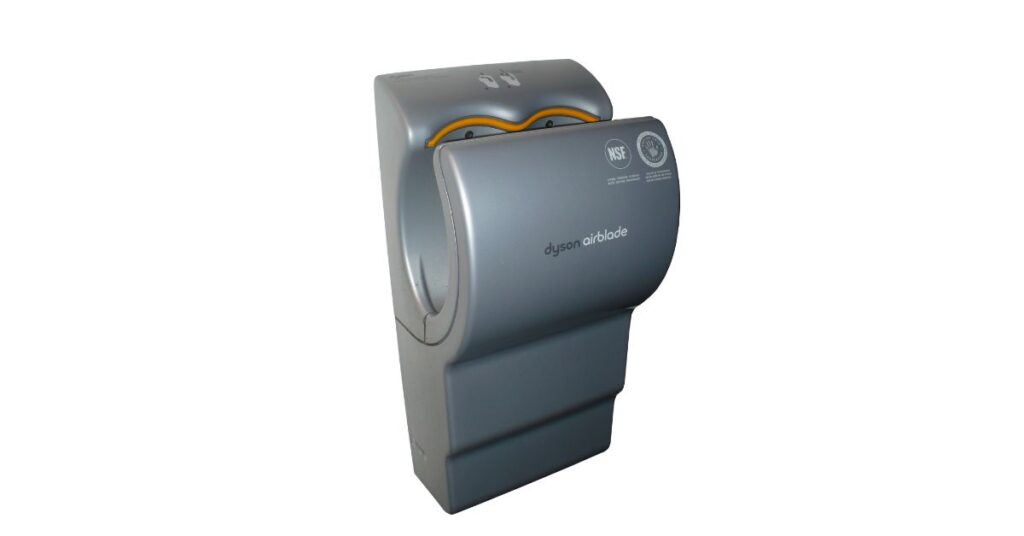Hand Dryers Reinvented: How Does Dyson Airblade Work?
If you’ve ever visited a public restroom, odds are, you’ve encountered the Dyson Airblade hand dryer. A shiny epitome of modernity and efficiency, this hand dryer can make your hair look as if it’s fresh out of a haircare advertisement. Have you ever pondered the engineering marvel and creative innovation that resulted in such an efficient appliance? Let’s deep-dive into how does Dyson Airblade work, the science behind it, and what sets it apart from the usual hand dryers.
Traditional Hand Dryers vs. Dyson Airblade: A Comparative Study
Traditional hand dryers essentially work by blowing hot air onto your hands, leading to evaporation of water. The process takes roughly half a minute and often leaves you with still-damp hands. Enter the Dyson Airblade, with its groundbreaking “Airblade technology,” which uses a high-velocity air stream to scrape the water off your hands in mere seconds.
The Mechanics of the Dyson Airblade
So, how does Dyson Airblade work? It all starts when the dryer sucks in the surrounding air and runs it through a High-Efficiency Particulate Air (HEPA) filter. This eliminates 99.97% of bacteria present in the air. Then, the motor thrusts the sanitized air at a blistering speed through a narrow slot at 400mph. This velocity is so powerful that it creates a high-velocity laminar airflow. This airflow is directed down the sides of the dryer’s casing, forming two sheets of high-velocity air which are then ejected from the narrow aperture, creating a blade-like force that separates water from your hands.
Innovative Features of the Dyson Airblade
One standout characteristic of the Dyson Airblade is its use of infrared sensors. These sensors spring into action when your hands enter the airflow, activating the machine. Consequently, the dryer only operates when it needs to, conserving energy, minimizing noise pollution, and avoiding lengthy queues in public restrooms.
The Green Impact: Dyson Airblade’s Carbon Footprint
Here’s something else to appreciate about the Dyson Airblade: it’s green! It emits just about 3.7g of CO2 per hand-drying session, compared to traditional hand dryers that emit over 7g. Lower carbon dioxide emissions mean a more environmentally friendly appliance.
Soothing Noise Levels: A Quieter Hand Drying Experience
Another impressive feature of the Dyson Airblade is its noise management. The hand dryers we’re used to can produce an average noise level of about 85 decibels, which is akin to a coffee grinder or a passing freight train. However, the Dyson Airblade has managed to bring down the noise levels to a comfortable average of 75 decibels, a noise level more in line with the typical ambient noise of most public restrooms.
Conclusion: How Does Dyson, A Technological Marvel Airblade Work?
To sum up, the Dyson Airblade is an ingenious marvel of technology that has redefined the global hand-drying experience. Its Airblade technology, infrared sensors, eco-friendliness, and noise reduction features make it a standout. Indeed, it’s not merely a hand dryer but an exemplar of how advanced engineering and materials can yield sleek, efficient, and environmentally friendly appliances. So, next time you see a Dyson Airblade in a public restroom, marvel at its engineering and take comfort in knowing that your hands are in good hands.
FAQs
❖ How long does it take to dry hands with the Dyson Airblade?
The Dyson Airblade can dry your hands in approximately 12-14 seconds, making it a significantly quicker alternative to traditional hand dryers that can take up to 30 seconds or more.
❖ Does the Dyson Airblade use hot air like traditional hand dryers?
Unlike traditional hand dryers, the Dyson Airblade does not rely on hot air to dry your hands. Instead, it utilizes a high-speed stream of room temperature air, which is more energy-efficient.
❖ How often does the HEPA filter in a Dyson Airblade need to be replaced?
The frequency of filter replacement depends on the usage and environment where the Airblade is installed. However, under normal circumstances, it is suggested to replace the HEPA filter once a year.
❖ How energy efficient is the Dyson Airblade compared to paper towels?
Compared to paper towels, the Dyson Airblade is significantly more energy-efficient. It uses up to 80% less energy than warm air dryers and can cost up to 98% less than paper towels to operate, over a year.
❖ What is the lifespan of a Dyson Airblade?
The Dyson Airblade is designed for a long lifespan and, with proper maintenance, can last several years. Its robust construction and high-quality components ensure its durability.
❖ Can the Dyson Airblade be used in all types of restrooms?
Yes, the Dyson Airblade can be used in all types of restrooms, including those in commercial spaces, offices, shopping malls, and more. Its compact design and high efficiency make it a versatile choice for various settings.
❖ Is the Dyson Airblade suitable for people with sensitive hearing?
The Dyson Airblade operates at an average noise level of 75 decibels, which is significantly lower than many traditional hand dryers. Therefore, it’s suitable for people with sensitive hearing, although individual comfort levels may vary.
❖ Is the Dyson Airblade user-friendly for people with disabilities?
Dyson has taken considerable effort to make the Airblade user-friendly for people with disabilities. Its automatic operation, facilitated by infrared sensors, doesn’t require users to press any buttons, making it an accessible hand-drying solution.
❖ What materials are used in the construction of the Dyson Airblade?
The Dyson Airblade is made from durable, high-quality materials like ABS Polycarbonate, known for its toughness and resistance to damage.
❖ How does Dyson Airblade contribute to a more hygienic environment?
The Dyson Airblade hand dryer contributes to a more hygienic environment by using a HEPA filter to remove 99.97% of bacteria from the air used to dry hands. It’s touch-free, reducing the potential spread of bacteria.
